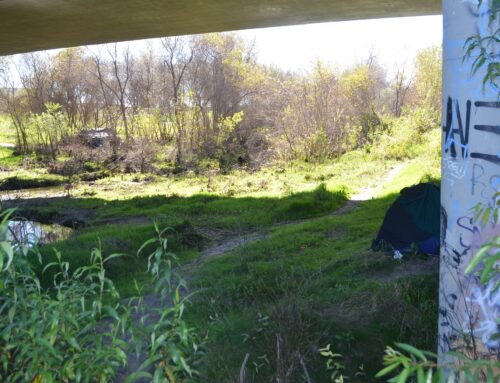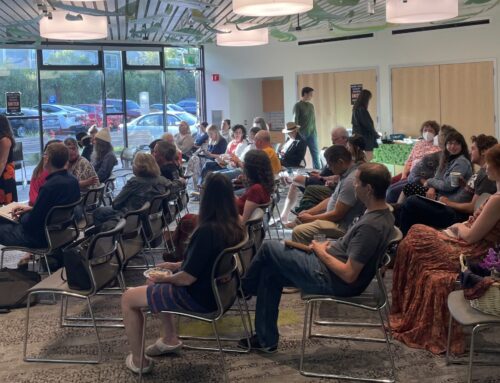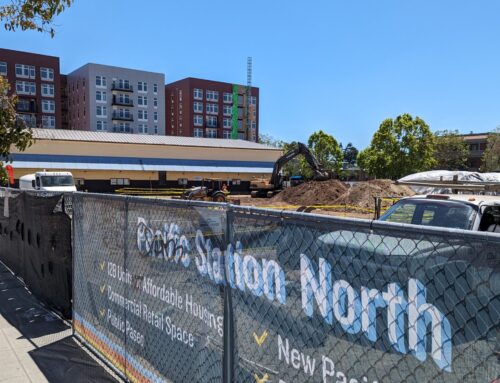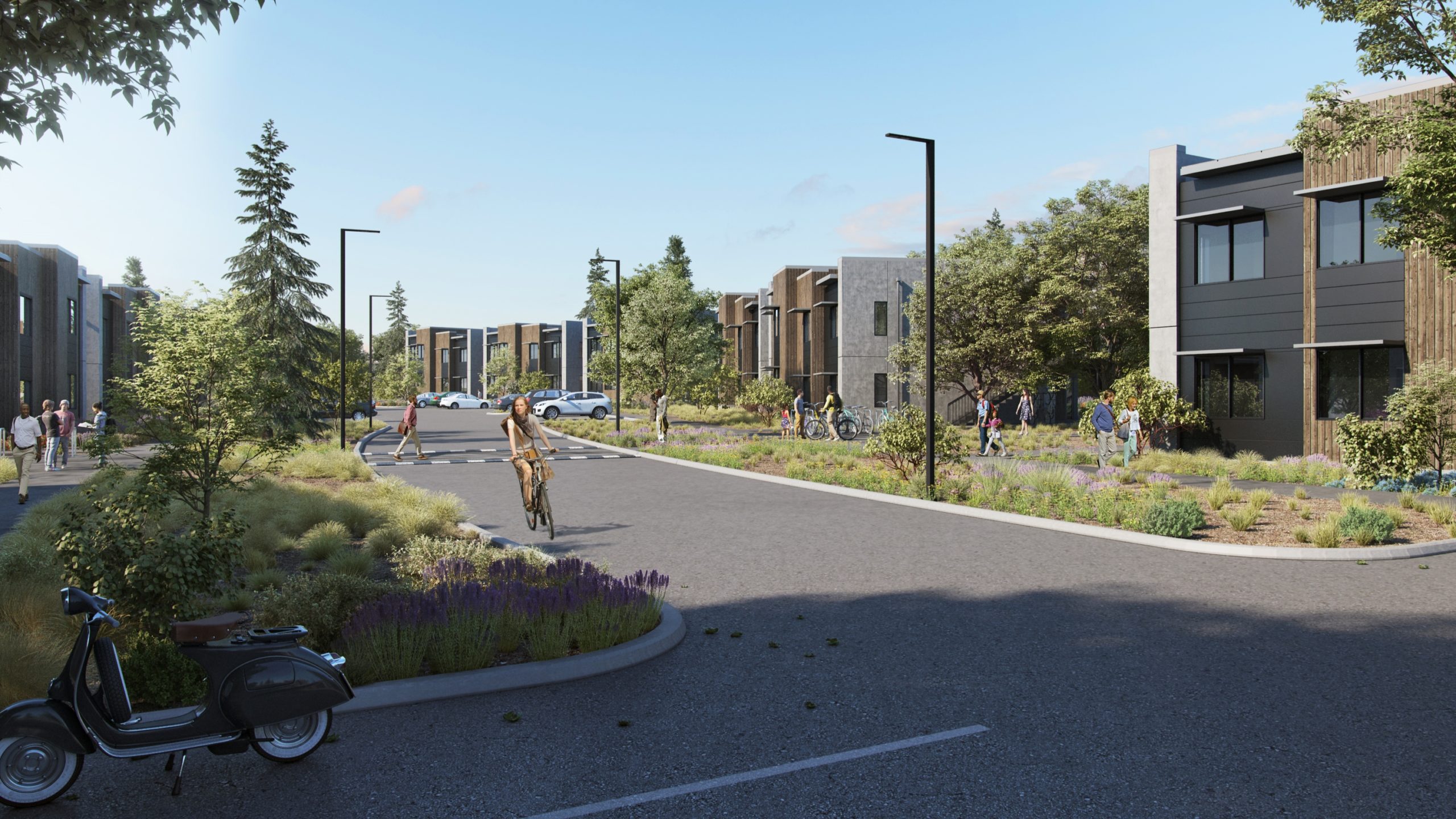
A rendering shows planned student-family housing on the East Meadow near Hagar and Coolidge drives at UC Santa Cruz. (UCSC)
SANTA CRUZ >> Citing concerns about wildlife and water supply, several lawsuits have tried to block UC Santa Cruz’s plans to build more housing on campus in recent years. With university plans to enroll about 9,000 additional students in the next 20 years, leaders from the city and County of Santa Cruz are considering a new lawsuit to compel UCSC to build more housing on campus.
Santa Cruz County Supervisor Ryan Coonerty, who has taught law courses at UCSC, said this month that city and county leaders want “a binding commitment by the university to house all of the new student enrollment on campus.”
A chief concern is that students who live off campus help squeeze an extremely tight rental market for other residents. After an unsuccessful mediation process between the city, county and UCSC leaders in December, Coonerty said city and county leaders now are considering legal options that include a new lawsuit against the university.
Coonerty said he is “still hopeful” that an agreement can be reached without a legal battle.
“At the end of the day, the city and the county don’t really have the authority to limit enrollment numbers on campus,” Coonerty said in January. “But what we can do is negotiate to have the university reduce the impact of that enrollment.”
The 2021 Long Range Development Plan would increase today’s roughly 19,800 undergraduate and graduate students to up to 28,000 by the year 2040.
UC Santa Cruz leaders have not approved a binding agreement to house all new students on campus. However, the 2021 Long Range plan approved by the UC Regents in October pledges to house all new undergraduate and graduate students above 19,500. The Long Range plan also sets a goal to allow up to 25% of the planned increase in faculty and staff to be housed on campus, according to the LRDP Community Handbook. If faculty and staff were to grow by 2,200 full time equivalents as proposed, that would mean UCSC would house 550 of them.
“We house more than 50% of our undergraduate students, more than any other UC,” said UCSC spokesman Scott Hernandez-Jason. “Student Housing West shows we want to do even more,” he said.
Another lawsuit from some Santa Cruz residents has already challenged the 2021 Long Range Development Plan. Leaders of the group, Habitat and Watershed Caretakers, said they are concerned with potential environmental and community impacts of additional university growth.
“The idea of adding another 9,000 students from where we are now is just not sustainable,” said Don Stevens, a spokesman of Habitat and Watershed Caretakers. “We don’t have the infrastructure.”
The suit contends that the university did not fully examine off-campus and remote alternatives to enrollment growth at the main campus.
Although plans for new on-campus housing have been in the works since 2005, several lawsuits have stalled construction.
Plans and lawsuits
In 2005, UCSC published a version of its Long Range Development Plan. Long-range plans for UC campuses essentially provide a framework for new construction. The plans are made in part to handle increased demand for higher education. For instance, UCSC received 74,000 applications for the 2021-22 school year. UCSC also has one of Santa Cruz County’s largest workforces with more than 17,000 employees.
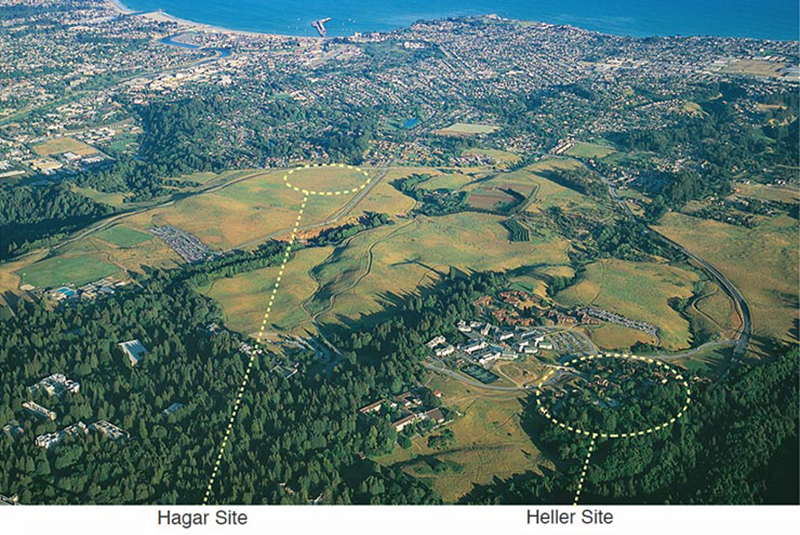
UC Santa Cruz campus housing is planned near Hagar Drive and off Heller Drive as part of Student Housing West. (UCSC)
In 2007, the city and county sued the university over aspects of the 2005 version of its Long Range Development Plan. As part of a 2008 settlement agreement, the university capped undergraduate enrollment at 17,500. The university also housed two-thirds of new students and paid for upgrades to city water and transportation systems.
In the 2021 Long-Range Development Plan, university leaders have a goal to house about 9,000 more students on campus. Some question whether that’s attainable.
“It’s an aspirational goal,” said longtime Santa Cruz resident Don Stevens. Stevens is a spokesman for Habitat and Watershed Caretakers that has sued the university several times.
University administrators “are not making any commitment,” he said.
Student Housing West
Separate from the Long Range Development Plan lawsuits, the university has faced court cases in the construction of new student housing.
Student Housing West is a development originally outlined in the 2005 Long Range Development Plan. It would add 3,000 beds across two sites on campus:
- An upper-division undergraduate housing complex on the West Campus off Heller Drive would house about 2,700 students.
- A student family housing development on the East Meadow near Hagar and Coolidge drives would have about 140 units.
- Graduate student housing would increase by about 220 beds, university officials have said.
Two groups sued the university to try to block construction of Student Housing West: The East Meadow Action Committee and Habitat and Watershed Caretakers.
The East Meadow Action Committee includes some UCSC faculty and staff, some former UC Regents and some UC Santa Cruz Foundation trustees. Habitat and Watershed Caretakers in part opposed the potential loss of sensitive animal habitat.
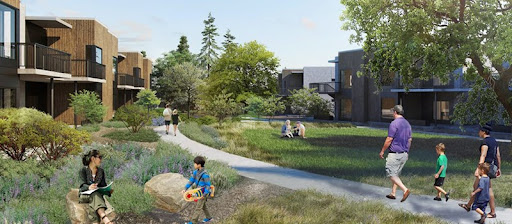
A rendering shows a housing project on the East Meadow at Hagar Drive at UC Santa Cruz. (UCSC)
One controversy has centered on a planned 140-unit multi-family housing development on the East Meadow of campus on the corner of Hagar and Coolidge drives. The proposal is at the corner of a vast meadow near an entrance to campus. It is across the road from other campus housing.
“For 50 plus years, the university has avoided building in that area because it’s such a spectacular part of the campus,” said East Meadow Action Committee member Paul Schoellhamer. “Watching the UCSC administration trying to destroy it is like watching a loved one go down a path that is self-destructive. It’s very painful.”
Scott Hernandez-Jason, the UCSC spokesman, said the East Meadow site was chosen for its proximity to existing employee housing. Employees who live on campus will be able to use a planned child care center within the new development, Hernandez-Jason said.
- In the East Meadow case in October 2020, a judge ruled that the university’s procedures were improper in its approval of the project. But the judge also ruled the environmental review was sufficient. In response, the East Meadow Action Committee appealed. Oral arguments in that case are set for Feb. 1.
- In April 2020, university leaders re-approved the East Meadow housing project with proper procedures. After that approval, the East Meadow Action Committee filed another lawsuit on the grounds that the university did not fully complete a financial analysis of alternative locations for the project. Schoellhamer, of the East Meadow committee, said he expects a verdict later this year.
- Construction at East Meadow remains stalled as litigation continues, university officials have said.
Lawsuits against Heller Drive housing proposal
Two more lawsuits from Habitat and Watershed Caretakers have challenged the entire Student Housing West project, including a site off Heller Drive on the west edge of campus. That site would house about 2,700 upper-division undergraduate students.
The proposed development off Heller includes habitat of the threatened California red-legged frog, according to the court complaint. Habitat and Watershed Caretakers filed suit upon the university’s initial approval of the project. When university leaders again approved it in 2020, the Habitat group filed a second challenge in court.
Don Stevens, the Habitat spokesman said he tentatively expects a ruling for both of those suits in spring. Construction timing remains in limbo because of the lawsuits, university leaders said.
Ryan Coonerty, the county supervisor, said the Student Housing West project helps the university meet its 2008 commitment to house two-thirds of its new enrollment on campus. “That requires that the university builds a lot of housing up on campus, which is what we asked for and agreed to,” Coonerty said.
“I’ve always taken the position that we can’t require UCSC to house students on campus, and then sue them for trying to build the housing to help students on campus,” Coonerty said.
Hernandez-Jason, the UCSC spokesman, also expressed frustration. “It’s disappointing and frustrating when lawsuits get in the way of providing solutions to problems that we all recognize are in a critical need of being addressed.”
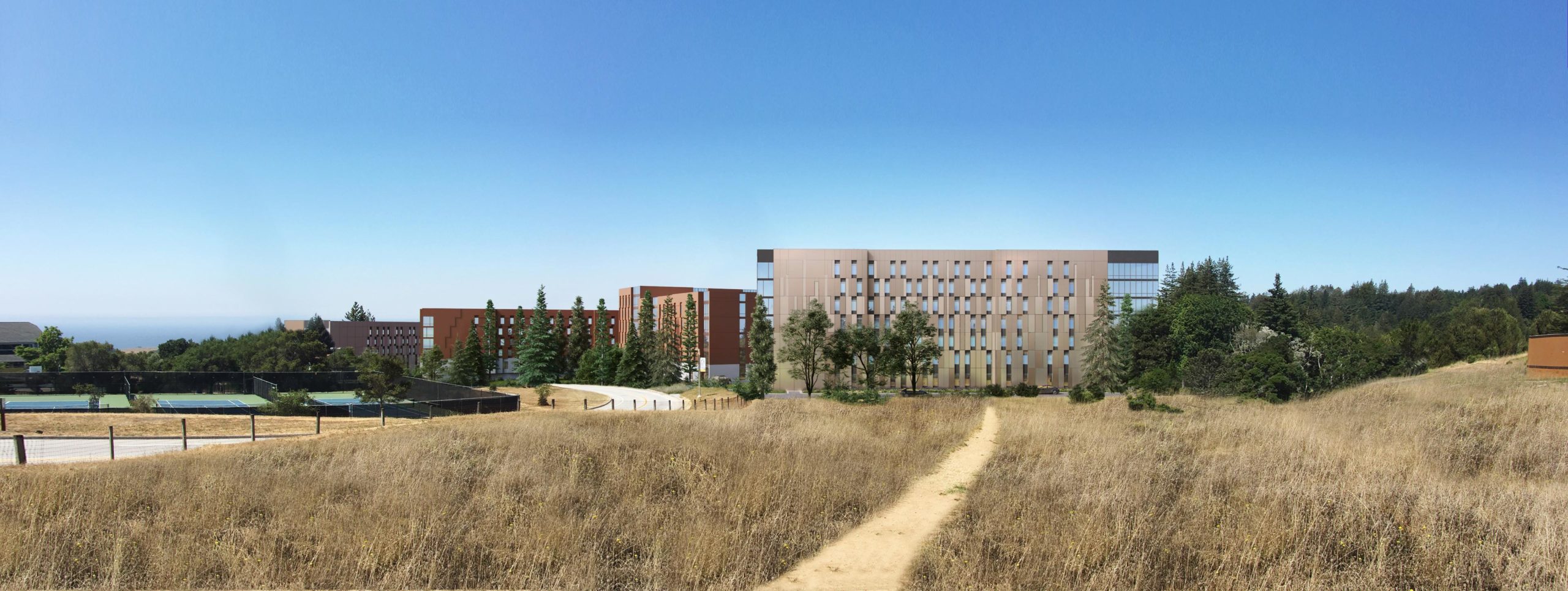
A rendering shows a planned Student Housing West development off Heller Drive at UC Santa Cruz. (UC Santa Cruz)
Water and housing
The Habitat and Watershed Caretakers’ lawsuit against the Long Range Development Plan claims additional water usage caused by university expansion will strain local water supplies.
However, Santa Cruz’s water situation is driven by inconsistent water supply, not increased demand, said Santa Cruz Interim City Manager Rosemary Menard. Menard was the city’s water director until 2021.
As climate change causes more “whiplash weather,” with wetter wet years and more intense droughts, the problem won’t be solved by limiting population growth but by creating more water storage, Menard said. “If we didn’t have the university, our problem would be the exact same problem,” said Menard. “And the solution to the problem would not be any different.”
Despite growth and university expansion in the past 10 years, water demand has dropped in Santa Cruz, according to city and county data.

Water demand in Santa Cruz County peaked in the late 1990s despite population growth and more water connections, utility leaders have reported. Home appliance technology, water conservation and other factors have contributed. (County of Santa Cruz)
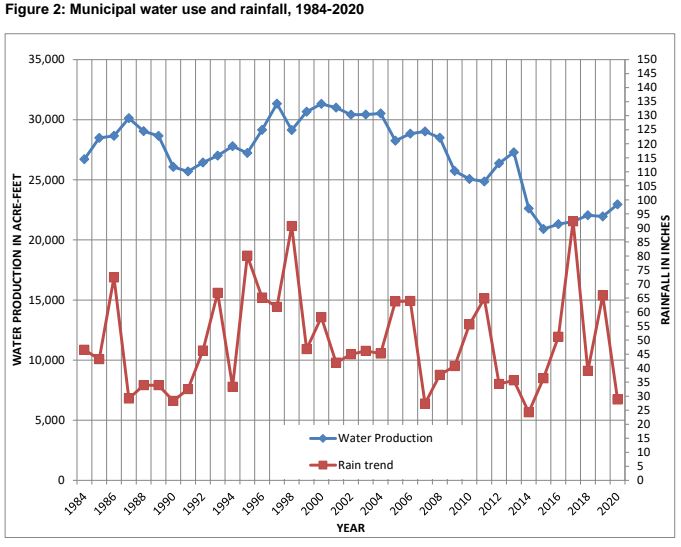
Annual rain varies, but water demand in recent years has been lower than in the mid-1980s in Santa Cruz County. (County of Santa Cruz)
Update: Additional information on the 2021 Long Range Development Plan and current UCSC enrollment was added to this story on Jan. 16.
Questions or comments? Email [email protected]. Santa Cruz Local is supported by members, major donors, sponsors and grants for the general support of our newsroom. Our news judgments are made independently and not on the basis of donor support. Learn more about Santa Cruz Local and how we are funded.
Jesse Kathan is a staff reporter for Santa Cruz Local through the California Local News Fellowship. They hold a master's degree in science communications from UC Santa Cruz.


